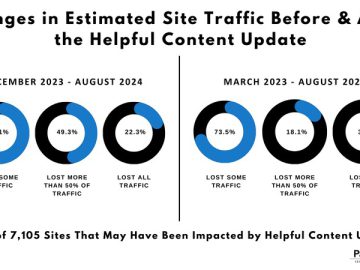Early SEO milestones might be easy, but scaling the results needs an upgraded approach.
What could that look like?
Like startups that come up with a solid niche idea and compete significantly with larger companies, we SEO pros and content strategists need to work harder to develop unique, fresh, niche strategies.
However, whenever we think of creating strategies, we start looking at what competitors are doing. We start feeling that we can win this game by outperforming our competitors.
Remember: we win when our focus is on winning the game and not on how to make our competitors lose.
So, here comes an upgraded approach to our SEO strategy – going beyond competitor analysis.
However, since our SEO strategies heavily rely on content, we’ll discuss content research beyond competitor analysis in this blog.
Now, What Is Content Research Beyond Competitor Analysis?
Most of us analyze our competitors to develop content ideas. It’s easy and quick.
But…
What if your competitors are ranking in the top positions but are not serving users’ intent?
What if your competitors might not be yielding enough traffic despite better rankings?
What if your competitors are driving massive organic traffic but not enough conversions?
Also, there may be some competitors that are doing extremely well regarding content KPIs serving SEO growth.
You may feel that if the competitors can achieve such results in one year, you can achieve them in six months by copying their strategies.
But that’s where you limit yourself in growth. Your competitors’ SEO and content teams might also be struggling; who knows?
This is why your content research must go beyond competitor analysis.
In this approach, we don’t look at what content competitors have written.
We don’t want to copy them or repeat their mistakes. We want to work in ways that truly resonate with our target audiences, geographies, business models, and industries.
So, the “content research beyond competitor analysis” approach helps us bring unique and fresh perspectives to our content research, creating incredible value for our audience and clients and scaling our SEO results extensively.
11 Ways Of Content Research Beyond Competitor Analysis To Scale SEO ROI
We have 11 ways to use this approach. Let’s uncover them one by one with step-by-step processes and examples.
1. Use Semrush
This is our basic step of content research since most of our initial goal is driving organic traffic.
And because Semrush is handy for most of our team members at Missive Digital, we log in immediately to start our content research instead of looking at competitors.
We put seed, actual, long-tail, and more keywords to do our content research, depending on the search volume, keyword difficulty, and search intent.
For example, we have put “diamond jewelry” into Semrush and will add the filters according to our SEO strategy.
Screenshot from Semrush, August 2024
Another content research feature of Semrush that we use extensively is Topic Research. We choose the content topics based on which ones relate directly or indirectly to our website.
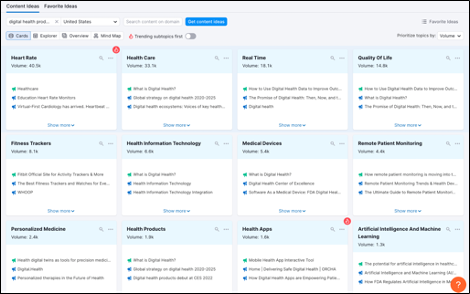 Screenshot from Semrush, August 2024
Screenshot from Semrush, August 2024
2. Use Ahrefs
To do the content research on Ahrefs, we follow the same steps as Semrush, but here, we also use Content Explorer.
We filter based on the Page Traffic and reference domains to identify queries that can bring us traffic and conversions.
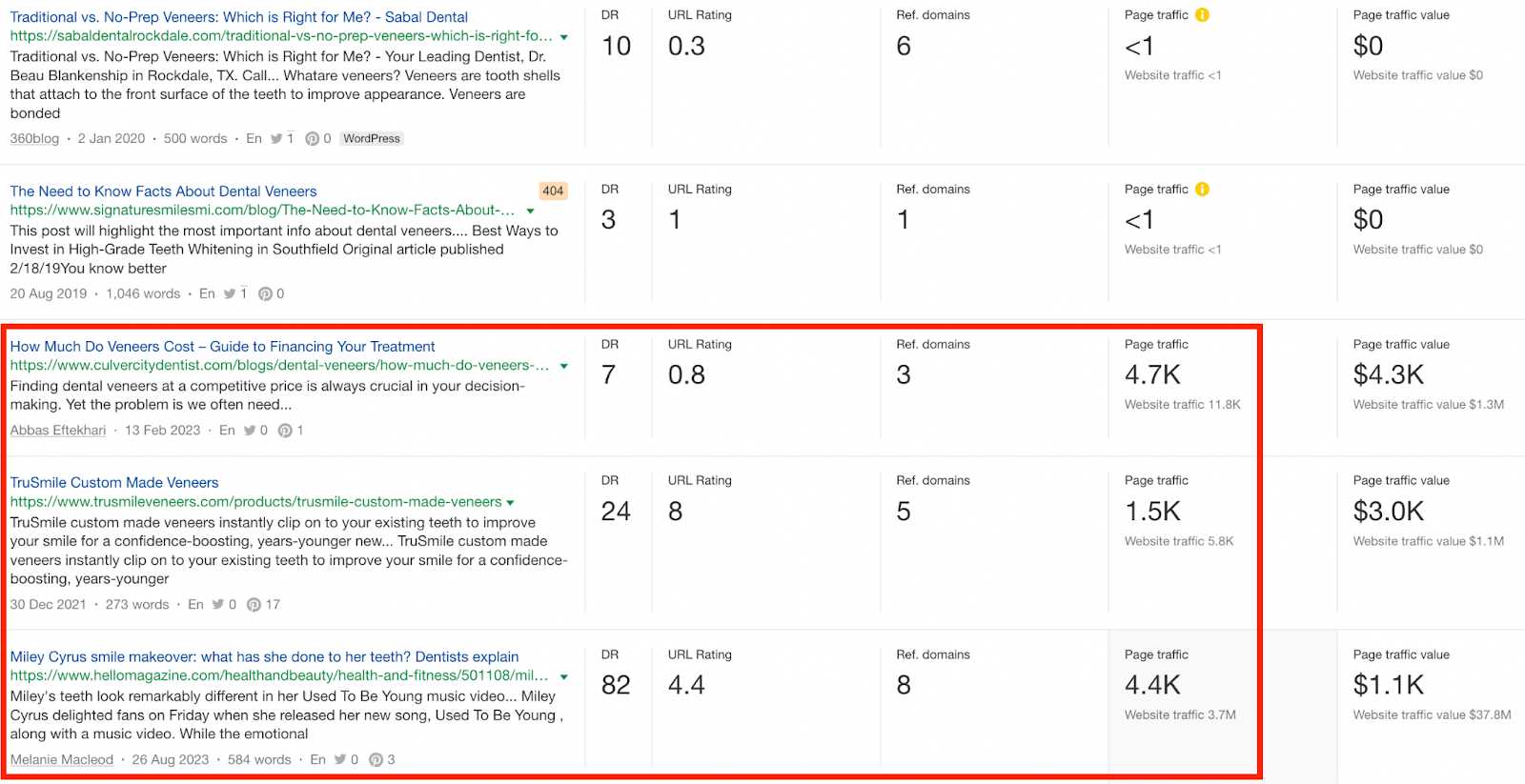 Screenshot from Ahrefs, August 2024
Screenshot from Ahrefs, August 2024
Then, we also examine the frequency of republishing, which gives our team an idea of when to schedule it next for content optimization, considering the performance.
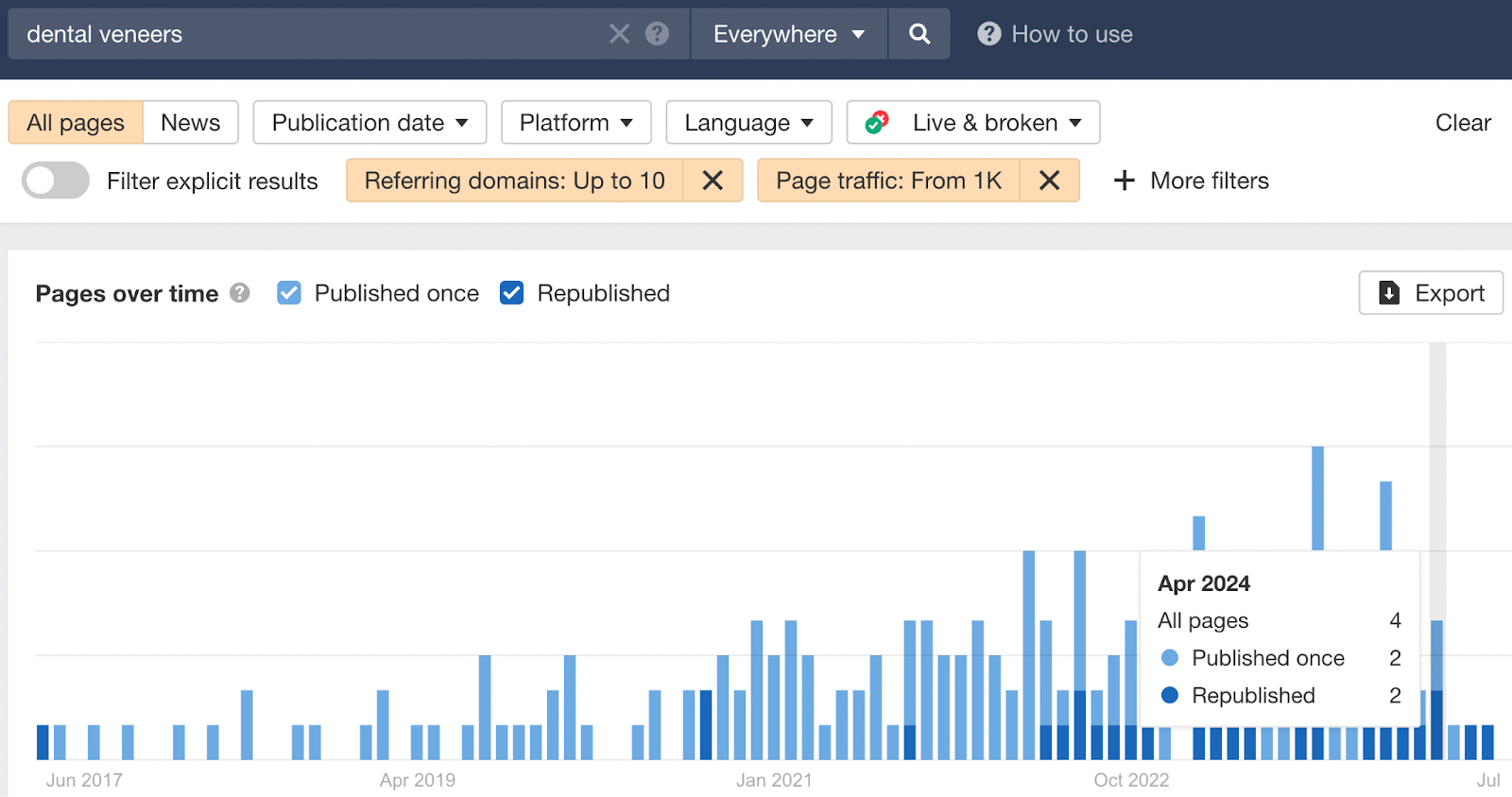 Screenshot from Ahrefs, August 2024
Screenshot from Ahrefs, August 2024
3. Use Google News
While auditing the content, if we realize that the client is already writing a lot of content, we try researching content ideas through Google News.
Also, for some D2C industries like jewelry, the trend also comes from celebrities wearing them – so we keep a close eye on Google News.
 Screenshot from search for [diamond necklace], Google, August 2024Sometimes, we prefer covering the news depending on the topics, while other times, we’ll check if these topics have any search volume and can be evergreen to continue driving us some value throughout.
Screenshot from search for [diamond necklace], Google, August 2024Sometimes, we prefer covering the news depending on the topics, while other times, we’ll check if these topics have any search volume and can be evergreen to continue driving us some value throughout.
For example, the screenshot below shows a ‘B’ necklace worn by Selena Gomez in reference to her boyfriend.
![Screenshot from search for [diamond necklace]](https://virtual-coach.com/wp-content/uploads/2024/09/screenshot-2024-08-12-at-7.51.22 pm-624.png) Screenshot from search for [diamond necklace], Google, August 2024We immediately check if there’s any search volume for “b necklace” on an SEO tool and see the screenshot below:
Screenshot from search for [diamond necklace], Google, August 2024We immediately check if there’s any search volume for “b necklace” on an SEO tool and see the screenshot below:
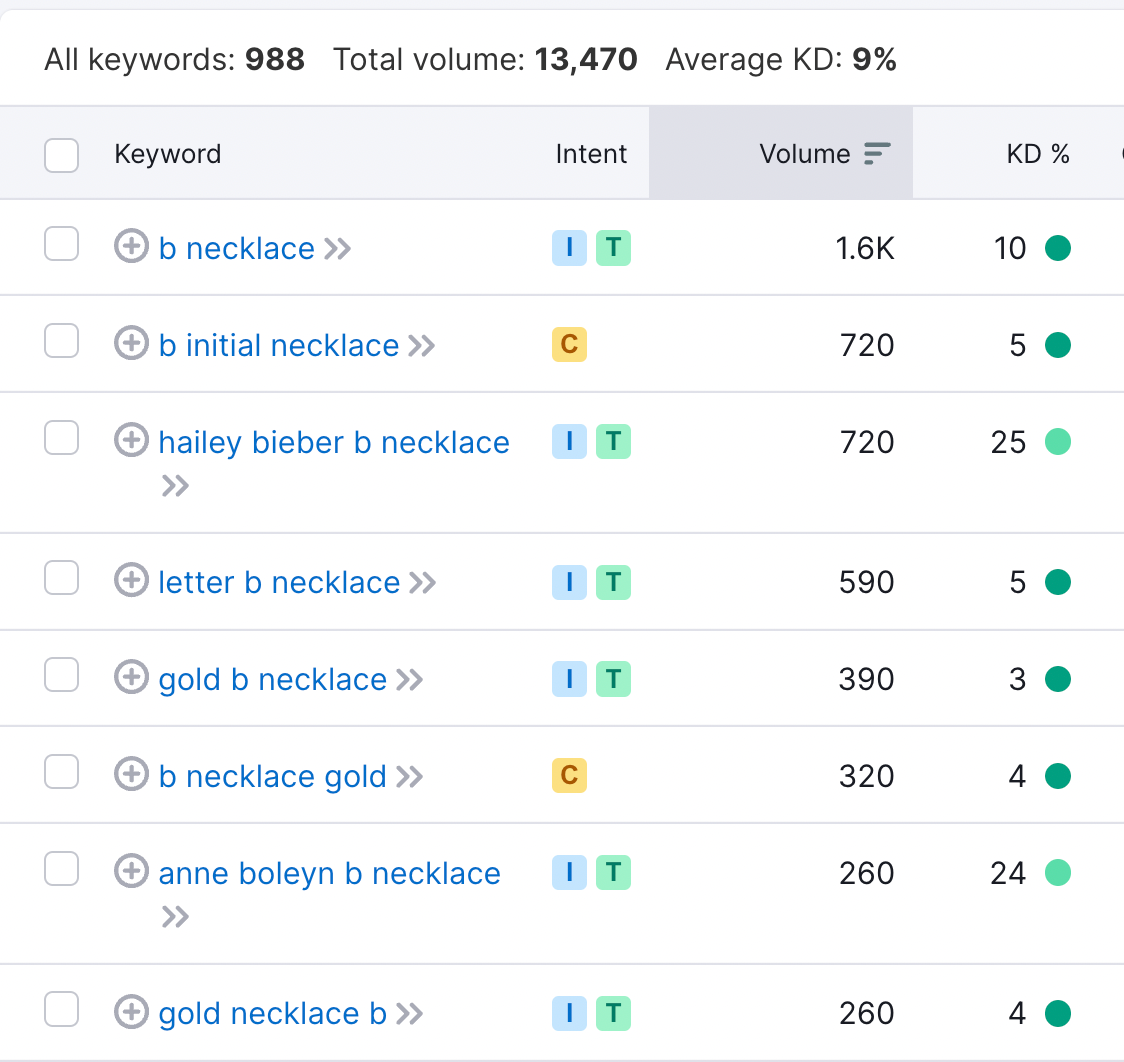 Screenshot by author, August 2024
Screenshot by author, August 2024
Bingo! Now, we have to discuss with the client’s team for our next content piece.
4. Use People Also Ask, AlsoAsked
Since most B2B IT and SaaS clients are highly technical, we sometimes struggle to understand the topic and create a content strategy.
People Also Ask on Google Search and AlsoAsked.com by Mark Williams-Cook works like a savior during our content research.
![Screenshot from search for [kubernetes architecture]](https://virtual-coach.com/wp-content/uploads/2024/09/screenshot-2024-08-12-at-7.51.41 pm-75.png) Screenshot from search for [kubernetes architecture], Google, August 2024The only limitation we have with People Also Ask is that it provides a few Q&As for a topic until you click on one, while AlsoAsked provides an entire list in one go, which saves you time.
Screenshot from search for [kubernetes architecture], Google, August 2024The only limitation we have with People Also Ask is that it provides a few Q&As for a topic until you click on one, while AlsoAsked provides an entire list in one go, which saves you time.
![Screenshot from search for [kubernetes architecture]](https://virtual-coach.com/wp-content/uploads/2024/09/screenshot-2024-08-12-at-7.52.06 pm-362.png) Screenshot from search for [kubernetes architecture], Google, August 2024We now have too much to learn about a topic and create content on, right?
Screenshot from search for [kubernetes architecture], Google, August 2024We now have too much to learn about a topic and create content on, right?
5. Check Google Trends
No matter what industry you are in, you’ve got something or the other trending.
In our SEO industry, SearchGPT is trending.
 Screenshot from Google Trends, August 2024
Screenshot from Google Trends, August 2024
So it’s worth writing about it to take the early advantage and grab the traffic share.
See, a lot of people are writing about it:
![Screenshot from search for [searchgpt]](https://virtual-coach.com/wp-content/uploads/2024/09/screenshot-2024-08-12-at-7.52.37 pm-170.png) Screenshot from search for [searchgpt], Google, August 2024It’s not just about writing; people are sharing it on social media, too.
Screenshot from search for [searchgpt], Google, August 2024It’s not just about writing; people are sharing it on social media, too.
So, it’s worth constantly watching what’s trending via Google Trends.
6. Hop On ChatGPT Or Gemini
Remember, we are here to do content research on ChatGPT or Gemini, not to choose the titles they suggest.
Here is a sample content research prompt that we have put for a contact center software company on ChatGPT:
 Screenshot from ChatGPT, August 2024
Screenshot from ChatGPT, August 2024
And here are the responses below:
 Screenshot from ChatGPT, August 2024
Screenshot from ChatGPT, August 2024
Since the topics are not up to the mark considering the audience (“BPO” in this case), based on the above content ideas, we’ll pick up the seed keywords or topics such as:
- Lessons from a Legacy Contact Center Software Company.
- The Contact Center Software Market In The BPO Segment.
- Optimizing Your Contact Center Operations.
- How to Drive Innovation in Your Customer Support Department?
- And more.
7. Monitor Social Media
Yes, we are all active on social media, so we can use it for our content research. Still, we are not considering competitors on social media at the moment.
This viral X thread inspired us to write a blog:
 Screenshot from X, August 2024
Screenshot from X, August 2024
Similarly, this article on content research was inspired by my recent post on LinkedIn:
 Screenshot from LinkedIn, August 2024
Screenshot from LinkedIn, August 2024
These are examples of self-created social media content that can be turned into blogs.
However, you can keep monitoring the types of content that get the most visibility and engagement on social media – be it LinkedIn, Instagram, X, or any other platform.
Turn them into your blogs or webinars, but don’t forget to mention them since it’s their original content idea.
8. Dive Into Industry-specific Research Studies
The most unique way to research content ideas is to read your industry-specific research studies extensively. And there’s no one way to do it.
For example, for one of the ecommerce consulting companies, we can get various content ideas from HBR’s eCommerce pricing test:
- Why Should Ecommerce Brands Stop Offering Free Shipping?
- X Benefits of No Free Shipping or Conditional Shipping.
- Free Shipping vs. Conditional Shipping.
 Image from HBR, August 2024
Image from HBR, August 2024
In the below study by Broadridge on Digital Transformation, the below can become the topic clusters, and each can have its own spoke-like content topics.
 Image from study by Broadridge on Digital Transformation, August 2024
Image from study by Broadridge on Digital Transformation, August 2024
For example, if we take Unleashing Artificial Intelligence, we can pick up so many topics out of just one graphic:
 Image from study by Broadridge on Digital Transformation, August 2024
Image from study by Broadridge on Digital Transformation, August 2024
9. Check Industry-Specific Forums/Communities
Most of our clientele includes IT companies, and we have used IT forums and communities like StackOverflow for content research.
For example, we can come up with the below topic clusters when covering Flutter for the non-technical and technical target audiences:
- Flutter animation widgets.
- Flutter dependency management.
- Why add Firebase to your Flutter app?
- And more.
 Screenshot from Stack Overflow, August 2024
Screenshot from Stack Overflow, August 2024
Similarly, there will be many such forums or communities of your client or employers available to peek into for such content ideas, except for competitive analysis.
10. Google site:reddit.com “my topic”
One such unique idea by Kunjal Chawhan is to Google site:reddit.com “my topic,” and let’s see what content ideas look like for a couple of topics:
Looking at the above screenshot, below are the topics that we can definitely create:
- X Most Popular Social Media Platforms for Ecommerce.
- How to Use Video Podcasts to Drive Ecommerce Sales?
- How to Boost Ecommerce Sales When Digital Marketing Seems Expensive?
- And more.
So yes, Kunjal’s way of content research is amazing, and from that, you can similarly Google:
site:“your industry’s leading site” “topic”
For example:
- site:searchenginejournal.com “ai content”
- site:quora.com “ai content”
- site:practicalecommerce.com “sales”
Let’s move on to the last but not the least method of content research, except for looking at competitors.
11. See What Competing Sites Have NOT Covered
Now you might wonder, “Weren’t the above content research ways except for competitors analysis?”
Yes, they are the ways to research content ideas except for what competitors have written.
But here, I’m trying to make a point where you have to see exactly what indirect competing sites are NOT writing about despite targeting the same industry, keyword clusters, and audience.
What is an indirect competing site?
An indirect competing site is a website that ranks for the industry and search queries of your target audience but is not exactly your product/service competitor. This can be a marketplace, publishing site, or product review site.
Let’s take a website, “leadsquared.com,” for indirect competitive analysis and pick the queries that rank after 50th positions and have a keyword difficulty of less than 29.
 Screenshot by author, August 2024
Screenshot by author, August 2024
Pick those queries and search on Google: site:leadsquared.com “sales funnel vs sales pipeline”.
 Screenshot from search for [site:leadsquared.com “sales funnel vs”, August 2024Now, you’ll see that the website has no content on that topic; you can create that if that falls under your product/service offering and can target your audience and industry.
Screenshot from search for [site:leadsquared.com “sales funnel vs”, August 2024Now, you’ll see that the website has no content on that topic; you can create that if that falls under your product/service offering and can target your audience and industry.
In short, you can cover the below topics:
- Sales funnel vs. sales pipeline.
- Sales funnel vs. marketing funnel.
- Sales funnel vs. flywheel.
- And more.
Just ensure these content topics align with your offerings to bring maximum ROI.
How Will Content Research Beyond Competitor Analysis Contribute To SEO Efforts?
When you go beyond competitor analysis for content research, you discover a few benefits:
- You innovate – With innovative content ideas, you can experiment and build better strategies that can bring unbelievable results. Also, with AI taking the space predominantly, businesses are looking for innovation in their business and marketing. So when you innovate, you may get better attention and even resources.
- You get niche opportunities – Instead of just focusing on what competitors are doing, you go deeper into understanding your target audience and explore new content ideas that your competitors might have missed. In such scenarios, you get better results since competition is reduced.
- You create unique, audience-specific content – My LinkedIn post saw great engagement because it resonated with its audience. This opened us to something unique and specific to the pain point of SEOs and content strategists: content ideation to scale SEO results with a not-so-usual approach. Such content helps us build authority in the market, which is essential today to becoming market leaders.
- You capitalize on emerging trends – Being an early adopter of something has huge potential for success. When you create your content strategy focused on what’s new or trending in your industry before it becomes mainstream, you get the most eyes right from the beginning and even repeat eyes going forward.
- You build better engagement and loyalty – You can extend beyond blogs, a traditional way of driving SEO results. Videos, whitepapers, case studies, user-generated content, and many more content formats can take the lead in building user engagement and brand loyalty through SEO.
- You earn backlinks – Yes, such unique content may require less effort to build backlinks since it can earn them.
Stop looking at competitors for content research; try using these fresh and unique ways to drive better content ROI.
Just remember two things: Competitors are not always right, and you are not necessarily required to look upon them when developing your SEO content strategies.
You can copy and paste your competitors’ strategies to achieve certain SEO milestones, but creating history requires an upgraded approach. What say?
More resources:
Featured Image: Natalya Kosarevich/Shutterstock




